| Listing 1 - 10 of 17 | << page >> |
Sort by
|
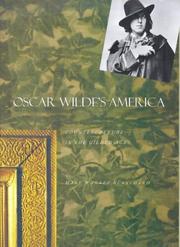
ISBN: 0300074603 9780300074604 Year: 1998 Publisher: New Haven, CT ; London : Yale University Press,
Abstract | Keywords | Export | Availability | Bookmark
 Loading...
Loading...Choose an application
- Reference Manager
- EndNote
- RefWorks (Direct export to RefWorks)
Aesthetics, American --- Arts, American --- Arts, Modern --- American aesthetics --- MODERN ARTS --- AESTHETICS --- 19th CENTURY --- U.S.
Book
ISBN: 9780521734486 9780521518307 9781139023399 9781139624565 1139624563 113902339X 9781139615266 1139615262 9781139611541 1139611542 052151830X 0521734487 1107233097 9781107233096 1139609688 9781139609685 1139620843 9781139620840 1107253454 9781107253452 Year: 2013 Publisher: Cambridge: Cambridge university press,
Abstract | Keywords | Export | Availability | Bookmark
 Loading...
Loading...Choose an application
- Reference Manager
- EndNote
- RefWorks (Direct export to RefWorks)
The British Aesthetic Tradition: From Shaftesbury to Wittgenstein is the first single volume to offer readers a comprehensive and systematic history of aesthetics in Britain and the United States from its inception in the early eighteenth century to major developments in the late twentieth century. The book consists of an introduction and eight chapters, and is divided into three parts. The first part, The Age of Taste, covers the eighteenth-century approaches of internal sense theorists, imagination theorists, and associationists. The second, The Age of Romanticism, takes readers from debates over the picturesque through British Romanticism to late Victorian criticism. The third, The Age of Analysis, covers early twentieth-century theories of Formalism and Expressionism to conclude with Wittgenstein and a number of views inspired by his thought.
Aesthetics, British --- Aesthetics, American --- History --- Esthétique --- Histoire --- History. --- Histoire. --- American aesthetics --- Aesthetics, English --- British aesthetics --- English aesthetics --- Arts and Humanities --- Philosophy --- Aesthetics, British - History --- Aesthetics, American - History --- Esthétique
Book
ISBN: 1503634248 9781503634244 9781503634237 Year: 2022 Publisher: Redwood City : Stanford University Press,
Abstract | Keywords | Export | Availability | Bookmark
 Loading...
Loading...Choose an application
- Reference Manager
- EndNote
- RefWorks (Direct export to RefWorks)
What do we really mean when we call something "graphic"? In American Graphic, Rebecca Clark examines the "graphic" as a term tellingly at odds with itself. On the one hand, it seems to evoke the grotesque; on the other hand, it promises the geometrically streamlined in the form of graphs, diagrams, and user interfaces. Clark's innovation is to ask what happens when the same moment in a work of literature is graphic in both ways at once. Her answer suggests the graphic turn in contemporary literature is intimately implicated in the fraught dynamics of identification. As Clark reveals, this double graphic indexes the unseemliness of a lust—in our current culture of information—for cool epistemological mastery over the bodies of others. Clark analyzes the contemporary graphic along three specific axes: the ethnographic, the pornographic, and the infographic. In each chapter, Clark's explication of the double graphic reads a canonical author against literary, visual and/or performance works by Black and/or female creators. Pairing works by Edgar Allan Poe, Vladimir Nabokov, and Thomas Pynchon with pieces by Mat Johnson, Kara Walker, Fran Ross, Narcissister, and Teju Cole, Clark tests the effects and affects of the double graphic across racialized and gendered axes of differences. American Graphic forces us to face how closely and uncomfortably yoked together disgust and data have become in our increasingly graph-ick world.
Aesthetics, American --- Affect (Psychology) in literature --- American fiction --- Grotesque in literature --- History and criticism --- Aesthetics, American. --- Affect (Psychology) in literature. --- Grotesque in literature. --- LITERARY CRITICISM / American / General. --- affect. --- comics. --- ethnographic. --- graphic. --- grotesque. --- infographic. --- pornographic. --- postmodernism. --- History and criticism.
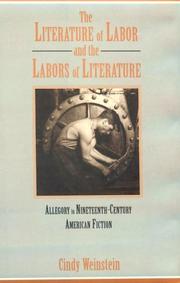
ISBN: 0521470544 0521054583 0511663595 Year: 1995 Publisher: Cambridge : Cambridge University Press,
Abstract | Keywords | Export | Availability | Bookmark
 Loading...
Loading...Choose an application
- Reference Manager
- EndNote
- RefWorks (Direct export to RefWorks)
The Literature of Labor and the Labors of Literature juxtaposes representations of labour in fictional texts and non-fictional texts in order to trace the intersections between aesthetic and economic discourse in nineteenth-century America. Both allegory and the new forms of labour produced a version of personhood that seemed frighteningly flat, a flatness that attacked the substance of the work ethic and, indeed, the very foundations of American individualism. Using this contextualized model of allegory, Weinstein argues that texts by Hawthorne, Melville, Twain and Adams are best understood both as allegories of labour (that is, the allegorical representations of the nature and cost of being a labouring being) and labours of allegory (that is, the visibility of the author's work of representation). Weinstein revolutionizes the notion of allegorical narrative, which is exposed as a literary medium of greater depth and consequence than has previously been implied - a working authorial vehicle for engaged and at times socially turbulent thought.
American fiction --- 19th century --- History and criticism --- Working class in literature --- Work in literature --- Allegory --- Work --- Social aspects --- United States --- History --- Aesthetics [American ] --- Work - Social aspects - United States - History - 19th century. --- Aesthetics, American - 19th century. --- Arts and Humanities --- Literature --- Labor --- Working class in literature. --- Aesthetics, American. --- Work in literature. --- Allegory. --- History and criticism. --- Personification in literature --- Symbolism in literature --- Labor and laboring classes --- Manpower --- Working class --- American aesthetics --- Labor and laboring classes in literature
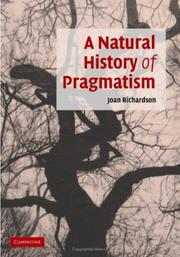
ISBN: 0521837480 9780521837484 0521694507 9780521694506 9780511485633 9780511261114 051126111X 0511260547 9780511260544 0511257988 9780511257988 110716172X 1280749121 051125928X 0511320264 0511485638 051125993X Year: 2007 Publisher: Cambridge Cambridge University Press
Abstract | Keywords | Export | Availability | Bookmark
 Loading...
Loading...Choose an application
- Reference Manager
- EndNote
- RefWorks (Direct export to RefWorks)
Joan Richardson provides a fascinating and compelling account of the emergence of the quintessential American philosophy: pragmatism. She demonstrates pragmatism's engagement with various branches of the natural sciences and traces the development of Jamesian pragmatism from the late nineteenth century through modernism, following its pointings into the present. Richardson combines strands from America's religious experience with scientific information to offer interpretations that break new ground in literary and cultural history. This book exemplifies the value of interdisciplinary approaches to producing literary criticism. In a series of highly original readings of Edwards, Emerson, William and Henry James, Stevens, and Stein, A Natural History of Pragmatism tracks the interplay of religious motive, scientific speculation, and literature in shaping an American aesthetic. Wide-ranging and bold, this groundbreaking book will be essential reading for all students and scholars of American literature.
American literature --- Pragmatism in literature. --- Natural history in literature. --- Aesthetics, American. --- English language --- American aesthetics --- History and criticism. --- Rhetoric. --- United States --- Intellectual life. --- Arts and Humanities --- Literature --- Germanic languages
Book
ISBN: 9783031136115 Year: 2022 Publisher: Cham, Switzerland : Palgrave Macmillan,
Abstract | Keywords | Export | Availability | Bookmark
 Loading...
Loading...Choose an application
- Reference Manager
- EndNote
- RefWorks (Direct export to RefWorks)
Aesthetics, American. --- Arts and society. --- Civilization. --- American aesthetics --- Barbarism --- Civilisation --- Auxiliary sciences of history --- Culture --- World Decade for Cultural Development, 1988-1997 --- Arts --- Arts and sociology --- Society and the arts --- Sociology and the arts --- Social aspects
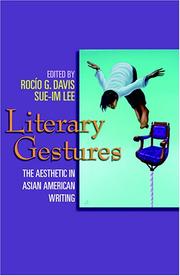
ISBN: 1592133657 Year: 2006 Publisher: Philadelphia : Temple University Press,
Abstract | Keywords | Export | Availability | Bookmark
 Loading...
Loading...Choose an application
- Reference Manager
- EndNote
- RefWorks (Direct export to RefWorks)
Literary Gestures:The Aesthetic in Asian American Writing contests the dominance of materialist and cultural critiques in Asian American literary discourse by re-centering critical attention around issues of aesthetics and literary form. Collapsing the perceived divisions between the "ethnic" and the "aesthetic" in Asian American literary criticism, the eleven original essays in this volume provide theoretically sophisticated and formally sensitive readings of works in prose, poetry, and drama. These contributions bring discussions of genre, canonicity, narrative, and literary value to the fore to show how aesthetic and formal concerns play an important part in the production and consumption of these works. By calling for a more balanced mode of criticism, this collection invites students and scholars to reinvest in the literary, not as a negation of the sociopolitical, but as a complementary strategy in reading and understanding Asian American literature.
Aesthetics [American ] --- Américains aziatiques dans la littérature --- Asian Americans in literature --- Aziatische Amerikanen in de literatuur --- Esthetica [Amerikaanse ] --- Esthétique américaine --- 820 <73> --- Amerikaanse literatuur --- 820 <73> Amerikaanse literatuur --- Aesthetics, American --- American literature --- Asian Americans --- Asians --- Ethnology --- English literature --- Agrarians (Group of writers) --- American aesthetics --- Asian American authors&delete& --- History and criticism --- Intellectual life --- Asian American authors --- Yamanaka, Lois-Ann --- Kingston, Maxine Hong --- Yau, John --- Criticism and interpretation --- Ondaatje, Michael --- Selvadurai, Shyam --- Lahiri, Jhumpa --- Badami, Anita Rao --- Ng, Fay Myenne --- Mukherjee, Bharati --- Hwang, David Henry --- Houston, Velina Hasu --- Kadohata, Cynthia --- Yep, Laurence --- Littérature américaine --- Américains d'origine asiatique --- Littérature --- Auteurs d'origine asiatique --- 20e siècle --- Thèmes, motifs --- Dans la littérature --- Esthétique
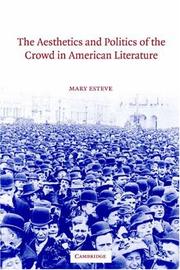
ISBN: 1107133866 1280161337 0511120648 1139148206 0511064977 0511058640 0511305818 0511485492 0511073437 9780511064975 9780511073434 9780511120640 9780521814881 052181488X 9780511485497 9781280161339 9786610161331 661016133X 9780521035903 0521035902 9781107133860 9781139148207 9780511058646 9780511305818 Year: 2003 Publisher: Cambridge, UK New York Cambridge University Press
Abstract | Keywords | Export | Availability | Bookmark
 Loading...
Loading...Choose an application
- Reference Manager
- EndNote
- RefWorks (Direct export to RefWorks)
Mary Esteve provides a study of crowd representations in American literature from the antebellum era to the early twentieth century. As a central icon of political and cultural democracy, the crowd occupies a prominent place in the American literary and cultural landscape. Esteve examines a range of writing by Poe, Hawthorne, Lydia Maria Child, Du Bois, James, and Stephen Crane among others. These writers, she argues, distinguish between the aesthetics of immersion in a crowd and the mode of collectivity demanded of political-liberal subjects. In their representations of everyday crowds, ranging from streams of urban pedestrians to swarms of train travellers, from upper-class parties to lower-class revivalist meetings, such authors seize on the political problems facing a mass liberal democracy - problems such as the stipulations of citizenship, nation formation, mass immigration and the emergence of mass media. Esteve examines both the aesthetic and political meanings of such urban crowd scenes.
American literature --- Crowds in literature. --- Politics and literature --- Literature and society --- Collective behavior in literature. --- City and town life in literature. --- Immigrants in literature. --- Lynching in literature. --- Aesthetics, American. --- Mobs in literature. --- Race in literature. --- American aesthetics --- Literature --- Literature and politics --- History and criticism. --- Political aspects --- Arts and Humanities
Book
ISBN: 1108386040 1108422934 Year: 2022 Publisher: Cambridge : Cambridge University Press,
Abstract | Keywords | Export | Availability | Bookmark
 Loading...
Loading...Choose an application
- Reference Manager
- EndNote
- RefWorks (Direct export to RefWorks)
This volume considers innovations, transitions, and traditions in both familiar and unfamiliar texts and moments in 1960s African American literature and culture. It interrogates declarations of race, authenticity, personal and collective empowerment, political action, and aesthetics within this key decade. It is divided into three sections. The first section engages poetry and music as pivotal cultural form in 1960s literary transitions. The second section explains how literature, culture, and politics intersect to offer a blueprint for revolution within and beyond the United States. The final section addresses literary and cultural moments that are lesser-known in the canon of African American literature and culture. This book presents the 1960s as a unique commitment to art, when 'Black' became a political identity, one in which racial social justice became inseparable from aesthetic practice.
American literature --- African Americans in literature. --- African Americans --- African American arts --- African American aesthetics. --- African American authors --- History and criticism. --- Intellectual life --- Politics and government --- Aesthetics, African American --- Afro-American aesthetics --- Aesthetics, American --- Afro-American arts --- Arts, African American --- Negro arts --- Ethnic arts --- Afro-Americans in literature --- Negroes in literature
Book
ISBN: 0674979044 9780674979048 9780674055438 0674055438 0674979028 Year: 2017 Publisher: Cambridge, MA
Abstract | Keywords | Export | Availability | Bookmark
 Loading...
Loading...Choose an application
- Reference Manager
- EndNote
- RefWorks (Direct export to RefWorks)
From its inception, African American literature has taken shape in relation to music. Black writing is informed by the conviction that music is the privileged archival medium of black communal experience--that music provides a "tone parallel" (in Duke Ellington's phrase) to African American history. Throughout the tradition, this conviction has compelled African American writers to discover models of literary form in the medium of musical performance. Black music, in other words, has long been taken to suggest strategies for writerly experimentation, for pressing against and extending the boundaries of articulate expression. Epistrophies seeks to come to terms with this foundational interface by considering the full variety of "jazz literature"--Both writing informed by the music and the surprisingly large body of writing by jazz musicians themselves.
Music and literature --- American literature --- Jazz in literature. --- Jazz --- African American aesthetics. --- Aesthetics, African American --- Afro-American aesthetics --- Aesthetics, American --- Literature and music --- Literature --- History. --- African American authors --- History and criticism. --- Amiri Baraka. --- Duke Ellington. --- Epistrophy. --- Henry Threadgill. --- James Weldon Johnson. --- Kenny Clarke. --- Louis Armstrong. --- Nathaniel Mackey. --- Sun Ra. --- Thelonious Monk. --- jazz literature. --- Musique et littérature --- Littérature américaine --- Histoire. --- Auteurs noirs américains --- Histoire et critique. --- Dans la littérature.
| Listing 1 - 10 of 17 | << page >> |
Sort by
|

 Search
Search Feedback
Feedback About UniCat
About UniCat  Help
Help News
News